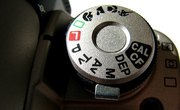
With a few hours of effort and the proper materials, almost anyone handy with tools can build a small solar furnace capable of producing temperatures in excess of 500 degrees Fahrenheit. You first choose either a lens or reflecting mirror as the means to focus the sun’s rays; this choice affects the layout of the furnace’s frame and other parts. You can use the furnace to boil water, solder small objects, or for other applications that need high temperatures.
Lens or Mirror?
A solar furnace works by concentrating sunlight from an area about one square foot down to a square inch or smaller; on a sunny day, the intense rays carry enough energy to make the focal point extremely hot. Either a lens or mirror the size of a medium pizza pan will work; a smaller one won't collect enough light to be useful, and a bigger one may be cumbersome. A Fresnel lens is an ideal lens for the task; it consists of a flat piece of glass or transparent plastic with concentric grooves cut into it. Fresnel lenses are inexpensive and available at science hobby shops. A parabolic mirror is another good choice; it need not be of perfect optical quality because your goal is to focus light, not to create images. It is important to note that a lens focuses light on the side opposite the incoming sunlight; a mirror’s focus is on the same side. If you choose the Fresnel lens for your furnace, and if it has one grooved side, that side faces outward, towards the sun.
Frame
You construct the frame for the solar furnace as a means to hold the lens or mirror steady and to hold a collector which catches the focused light. You can use sturdy metal, wood or plastic materials to construct the frame as long as you avoid shiny materials that might accidentally reflect sunlight into your eyes. Ideally, the frame pivots on a horizontal axis to adjust the mirror or lens so it points directly at the sun, regardless of the season or time of day. After adjusting, the pivot should tighten securely in place, making for a stable setup.
Collector
The furnace’s collector is a cup or container that catches the sun’s focused rays and becomes hot. Use dull or matte-finished metal for the container; plastic will melt or burn almost instantly, and shiny metal may reflect the sun into your eyes. Avoid painted metal, as the hot solar rays will burn the paint, possibly producing hazardous fumes. Obtain a brick to serve as a fireproof pedestal on which to rest the collector; metal will work as well, although a brick won’t conduct heat away from the collector, helping maintain its high temperature.
Safety
There are two key safety risks with your solar furnace: heat and bright sunlight. If you touch the collector or place your hand in the focal area, the focused light will produce painful burns. Exercise as much care with objects you heat with the solar furnace as you would hot items from a kitchen oven; use tongs to place and retrieve objects into the collector. The bright concentrated sunlight also poses a hazard to your eyes; avoid staring at the focused light for prolonged periods, and never let it reflect directly into your eyes.
Uses
A solar furnace’s power is directly related to its size; bigger lenses and mirrors yield higher temperatures. A large, freestanding solar furnace, about a meter in size, will melt soft metals such as lead and copper; smaller tabletop models can melt solder. With care, you can also use the furnace to fire clay into pottery. It will boil water for cooking and broil meat and vegetables. You can also use the furnace’s heat to power a Sterling engine for electricity or to run small machines.
References
About the Author
Chicago native John Papiewski has a physics degree and has been writing since 1991. He has contributed to "Foresight Update," a nanotechnology newsletter from the Foresight Institute. He also contributed to the book, "Nanotechnology: Molecular Speculations on Global Abundance." Please, no workplace calls/emails!
Photo Credits
Hemera Technologies/AbleStock.com/Getty Images
